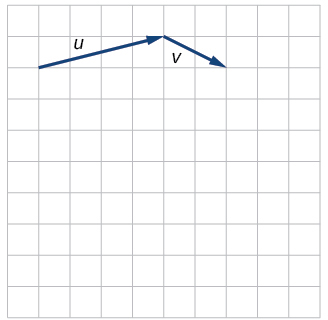10.8E: Vectors (Exercises)
( \newcommand{\kernel}{\mathrm{null}\,}\)
For the following exercises, determine whether the two vectors,
52.
53.
For the following exercises, use the vectors
54.
55.
For the following exercises, find a unit vector in the same direction as the given vector.
56.
57.
For the following exercises, find the magnitude and direction of the vector.
58.
59.
For the following exercises, calculate
60.
61.
62. Given
63. Given the vectors shown in Figure 4 , sketch

64. Given initial point


